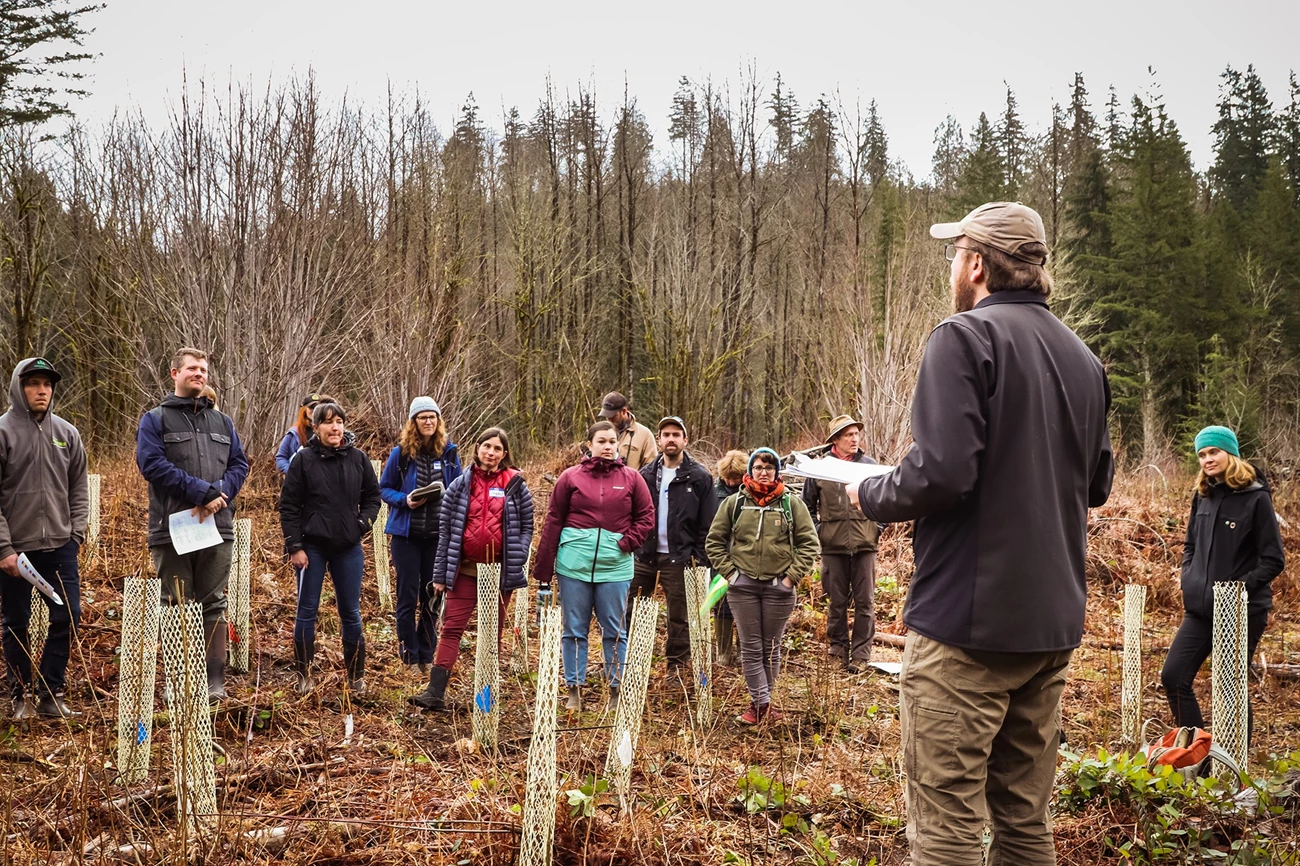Last updated: July 28, 2021
Article
Stossel Creek: A Forest Planted for Future Climate in Washington

Courtesy of the Mountains to Sound Greenway Trust
In Washington state, the Mountains to Sound Greenway Trust and its partners have been working together on a conservation and habitat restoration project for threatened species that utilizes an innovative approach to planting trees adapted to future climates.
The site of the project, Stossel Creek, is an important stream for steelhead, a threatened species within the Mountains to Sound Greenway National Heritage Area in western Washington. The project encompasses a 154-acre parcel of land that was acquired by the City of Seattle through their Endangered Species Act Early Action Plan. The land had been clear cut by a private timber company, and the Greenway Trust helped secure a grant from the Wildlife Conservation Society (WCS) through its Climate Adaptation Fund to restore the site by planting more than 14,000 trees.
The site of the project, Stossel Creek, is an important stream for steelhead, a threatened species within the Mountains to Sound Greenway National Heritage Area in western Washington. The project encompasses a 154-acre parcel of land that was acquired by the City of Seattle through their Endangered Species Act Early Action Plan. The land had been clear cut by a private timber company, and the Greenway Trust helped secure a grant from the Wildlife Conservation Society (WCS) through its Climate Adaptation Fund to restore the site by planting more than 14,000 trees.

Courtesy of Mountains to Sound Greenway Trust
After multiple years of fundraising, planning, and site prep, project partners recently hosted a workshop and field trip attended by 35 people. The audience included restoration practitioners and private foresters, all interested in learning approaches to make the forests they manage better able to withstand the changing climates of western Washington.
